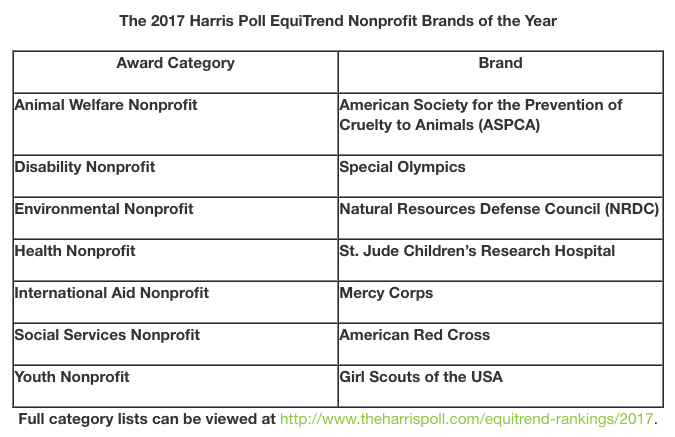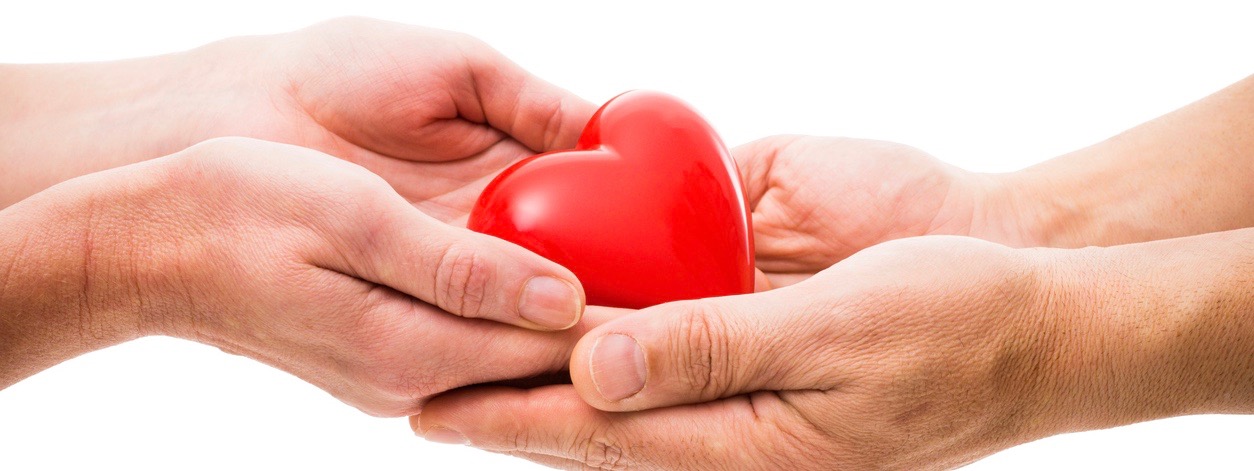U.S. consumers’ likelihood to engage with nonprofits is up more than 500 percent since early 2016, according to new research from The Harris Poll’s 29th annual EquiTrend Study, which measures brand health over time. Twenty percent of nonprofit brands report a significant increase in consideration—referencing consumers’ likelihood to donate time or money to a nonprofit in the future—compared to three percent in early 2016.
The study, which was fielded shortly after the presidential election and through the first few weeks of the new administration, also shows only nine percent of nonprofits reporting a significant decrease in consideration, compared to 32 percent in early 2016.
“We haven’t seen this level of nonprofit consideration since 2014, suggesting that consumers dissatisfied with the presidential election have been motivated to support causes that reflect their values,” said Joan Sinopoli, vice president of brand solutions at The Harris Poll, in a news release. “The same inspiration for ‘rage donations’ has extended to brand equity.”
Liberals rate environmental, international aid nonprofits higher than conservatives do
While Harris Poll’s research shows that overall, liberal-leaning consumers award higher brand equity to nonprofits than conservative-leaning consumers do, the liberal-conservative gap for environmental (liberals, +14.7) and international aid (liberals, +9.0) nonprofits is significantly stronger.
“Given the timing of the survey, when we consider some of the President’s campaign promises, such as cancelling the Paris Climate Agreement and early actions of the administration, such as the travel ban, it’s understandable to see the outpouring of support for environmental and international aid nonprofits,” said Sinopoli.

Millennials show support for environmental, international aid and youth nonprofits
Similar to liberal-leaning consumers, millennials report higher equity for nonprofits overall compared to baby boomers, with a significant gap for international aid (+9.7 millennials), youth (+6.0 millennials) and environmental (+5.7 millennials) non-profits.
“It’s been said that millennials don’t support organizations, they support causes,” said Sinopoli. “To raise their profile with this important generational cohort, nonprofits need to understand how to court and stay in touch with millennials to generate their support. Millennials may support your organization’s cause, but how do you encourage their long-term support? That’s a question that every nonprofit should be asking.”
Additional nonprofit findings include:
- Environmental Nonprofit Brand of the Year National Resource Defense Council (NRDC) regains the lead in the category after a dip in 2016. While NRDC is a lower Familiarity brand (12%) overall, the strength of Familiarity among those aware is higher than others in the category.
- First time International Aid Nonprofit Brand of the Year Mercy Corps has a relatively low Familiarity rating, but those aware of the brand give it very strong Quality marks and category-leading Consideration ratings. While Mercy Corps brand equity score is driven by very strong ratings from liberal-leaning consumers, the brand also performs well with Moderates and Conservatives.
- ASPCA regains the Animal Welfare Nonprofit Brand of the Year title from Best Friends Animal Society. ASPCA leads the category on Familiarity (70 percent of consumers are aware of the brand) and Quality. ASPCA is also the “Most Trusted” brand in the Animal Welfare Nonprofit category.
- Special Olympics retains the Disability Non-Profit Brand of the Year title for the second consecutive year, thanks to strong Familiarity and a category-leading Quality score.
- St. Jude Children’s Research Hospital claims the Health Nonprofit Brand of the Year title for the fourth consecutive year. St. Jude leads the category in Quality and has a significantly higher Consideration score when compared to other Health nonprofit brands. Notably, there are only 16 nonprofit brands – including St. Jude — where conservative consumers give higher scores than do liberals.
- American Red Cross edges out Habitat for Humanity to reclaim its Social Services Nonprofit Brand of the Year title; American Red Cross was Brand of the Year in 2012 and 2013. American Red Cross has one of the highest levels of Familiarity in the nonprofit space (tied with Goodwill at 92 percent).
- Girl Scouts of the USA, the longest-standing Nonprofit Brand of the Year, marks its sixth consecutive year as Youth Nonprofit Brand of the Year. Girl Scouts has a high level of Familiarity (85 percent), but its Consideration level keeps it at the top of the category ranking.
The EquiTrend Brand Equity Index is comprised of three factors—Familiarity, Quality and Consideration—that result in a brand equity rating for each brand. Brands ranking highest in equity receive the Harris Poll EquiTrend “Brand of the Year” award for their respective categories. This year, more than 100,000 U.S. consumers assessed more than 4,000 brands across more than 450 categories. See the full Harris Poll EquiTrend Brands of the Year list here.
The 2017 Harris Poll EquiTrend Study is based on a sample of 102,617 U.S. consumers ages 15 and over surveyed online, in English, between December 30, 2016 and February 21, 2017. The survey took an average of 30 minutes to complete. The total number of brands rated was 4,052. Each respondent was asked to rate a total of 40 randomly selected brands. Each brand received approximately 1,000 ratings. Data was weighted to be representative of the entire U.S. population of consumers ages 15 and over based on age by sex, education, race/ethnicity, region, income, and data from respondents ages 18 and over were also weighted for their propensity to be online.







